There are fantasy, sci-fi, and horror movies that not every fan has seen. Not every movie ever made has been seen by the audience that lives for such a prize. Some of them are worth another look, because sometimes not all movies have to stay obscure.
Sometimes if you’re into jokes, you know what jokes know…
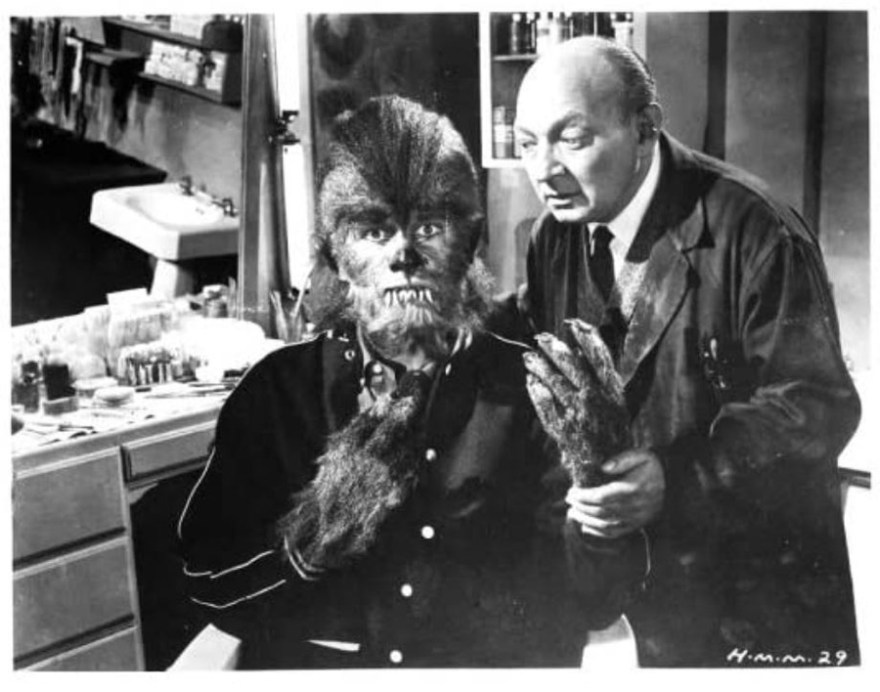
How to make a monster (1958)
Distributed by: American International Pictures
Directed by: Herbert L. Strock
No one loves itself more than Hollywood.
Narcissism in the industry is both a necessity and a byproduct of doing business there. For every interesting movie we see, there’s a story behind it that’s dying to be told, no matter how hard they try to deny it. Sometimes we hear of some really big ones, like the “Scarlet O’Hara Wars” that continued as MGM tried to pitch their female lead for carried away by the windor all the machinations behind the making of The Godfather which became the recent miniseries, The offer. Besides, we have Robert Evans, whose Hollywood exploits have become a book The child stays in the picturewhich led to an animated film of the same name, which later spawned the television series notorious child.
No one was above such assertive love, not even Sam Arkoff:
The film’s opening credits help set the story, with the film’s title written on a make-up station window:
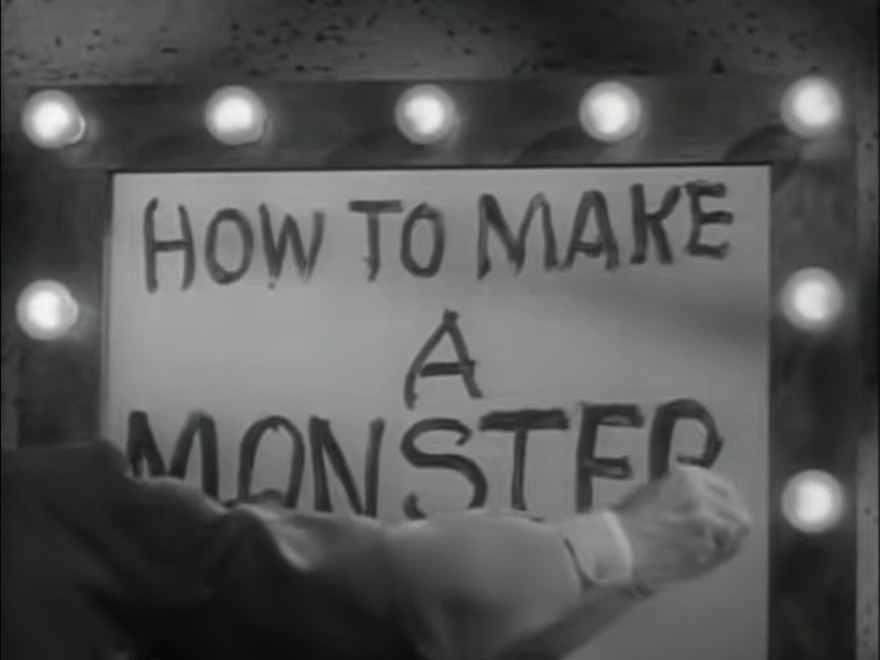
As the rest of the credits appear, the hand that wrote the title is working on a sketch of one of our monsters, which fans of such films might recognize as the creature from I was a teenage werewolf. We dissipate from there to see actor Larry Drake (Gary Clarke), made up as the creature admiring his transformation at the hands of makeup artist Pete Dumond (Robert H. Harris, in one of his rare acting roles that was not for television) and his assistant Rivero (Paul Binegar).
After a few banter, Dumond accompanies our makeup-clad Larry on set, walking around the studio while drawing plenty of admiring glances at the craftsmanship. They’re on their way to set, ready for a scene to shoot with the monster of I was a young Frankensteinportrayed by actor Tony Manetll (Gerry Conway).

(Interestingly, the original star of Teen Frankenstein is under the same makeup here, but they went with a different actor under the other makeup job, possibly because the original teenage werewolf Michael Landon was overbooked doing Westerns for TV…)
Just as Dumond is in a congratulatory mood, he receives a visit from two representatives of the company that has just purchased the studio, Jeff Clayton (Paul Maxwell) and John Nixon (Eddie Marr). The two showed up personally to let Dumond know he was fired, as the new owners want to move away from monster movies in favor of musicals and comedies.
This doesn’t sit well with the makeup maestro, who in his anger and regret finds inspiration to deal with the crisis:
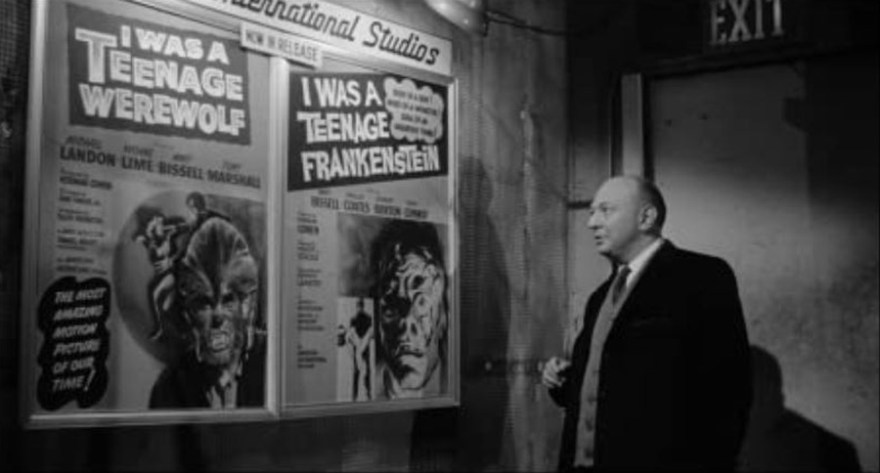
His plan is simple: rework the foundation by adding an additional ingredient that would act like novocaine (which, unlike the powder we see on screen, comes in a liquid form), thus putting the tracks of the picture under his control. Their wills undermined, these saps are made to take hypnotic suggestions from Dumond to kill Clayton and Nixon, then forget they committed murder.
And at first, the plan seems to be working well. The LAPD investigation led by Captain Hancock (Morris Ankrum) circles around, not even considering the makeup artists as suspects at first. The only person who might be about to crack the case is ambitious studio security guard Monahan (Dennis Cross), who makes the unfortunate mistake of sharing his suspicions with Dumond, who decides to kill him himself after having made up…
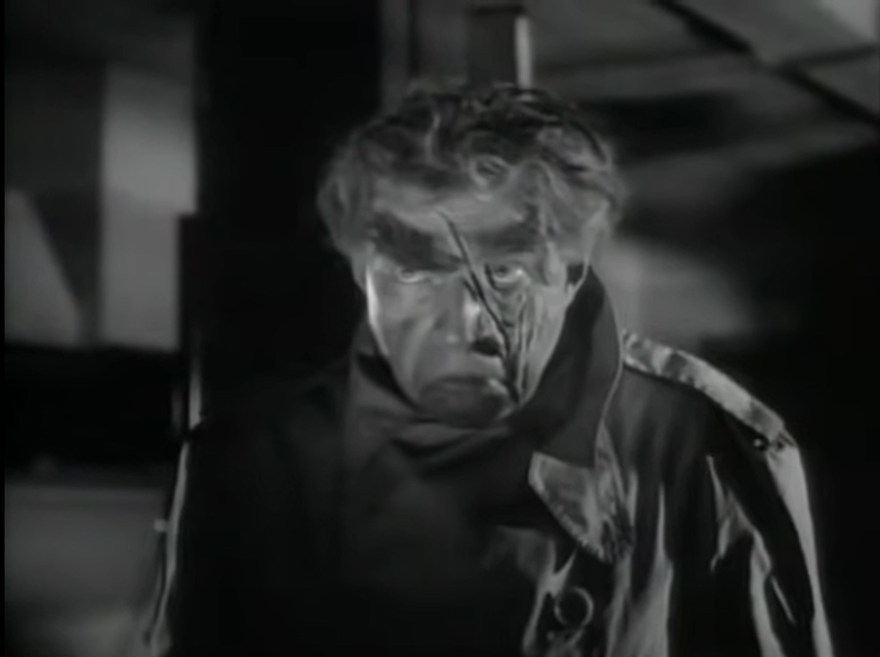
A mystery that arises is: Why? Why does Dumond go to the effort of putting on makeup to kill someone, if it means wasting unnecessary time and resources? If he succeeds, it’s not like Monahan is going to tell anyone, is it…?
Besides, there’s the whole premise itself, that a makeup artist who works on monsters would be washed away when the studio closed shop. In real life, famous freak makeup artists Jack P. Pierce and William Tuttle found their services in demand on more conventional projects long after their most famous creations had finished their time on set. Perhaps there’s a psychological issue we need to be aware of, one we don’t see just by watching Harris, who barely varies his delivery between his emotional states.

There are a lot of other things that don’t work here. Pretty much the only interesting thing Strock does as a director is transition the film from black and white to color in innovative ways during its final ten minutes, although at this point the script doesn’t give it much – something to work with when change happens. Every other actor feels like they’re trying harder than Harris to squeeze something out of their lines, but the script by Aben Kandel and Herman Cohen (who has a small role as the screening room’s projectionist who can’t offer the cops much) doesn’t serve them well wither.
Seems like the worst part of the project, the one to blame above all other failures, is the script, which feels pedantic and flat. One gets the impression watching the film, more of a police procedural than a horror film, that there is simply nothing interesting to tell in this story.
Or is there…?
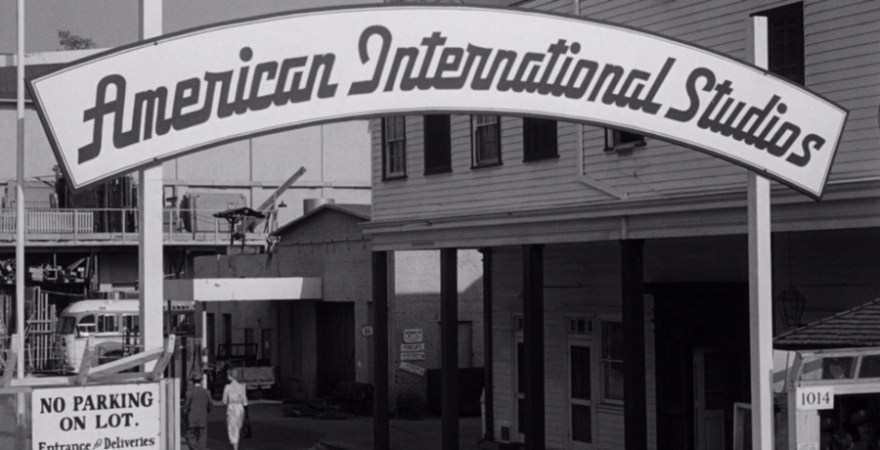
Note that there was never a physical AI studio; it’s actually Ziv Studios, a TV production company that just replaced AI for this image…
There are a few scenes where Clayton and Nixon’s characters talk about Hollywood business, with each other and with anyone else in the frame. Between senseless killings and sloppy deductions, they both note how the business evolves, particularly how back-eastern corporations come to buy studios and run them as they see fit, with little loyalty to anyone working for them. studios. As far as they’re concerned, though, anyone who’s shown the door should be able to start working for TV productions that pop up in town.
At the same time the movie was being produced and released, two of the biggest actors in town were going through this themselves. At MGM, Dory Schary was fired by East Coast investors after the studio lost money. To stop the bleeding, they released their contracted players, many of whom went on TV. Meanwhile, outsiders Music Company of America acquired Universal Pictures, bringing major changes to the way they do business.
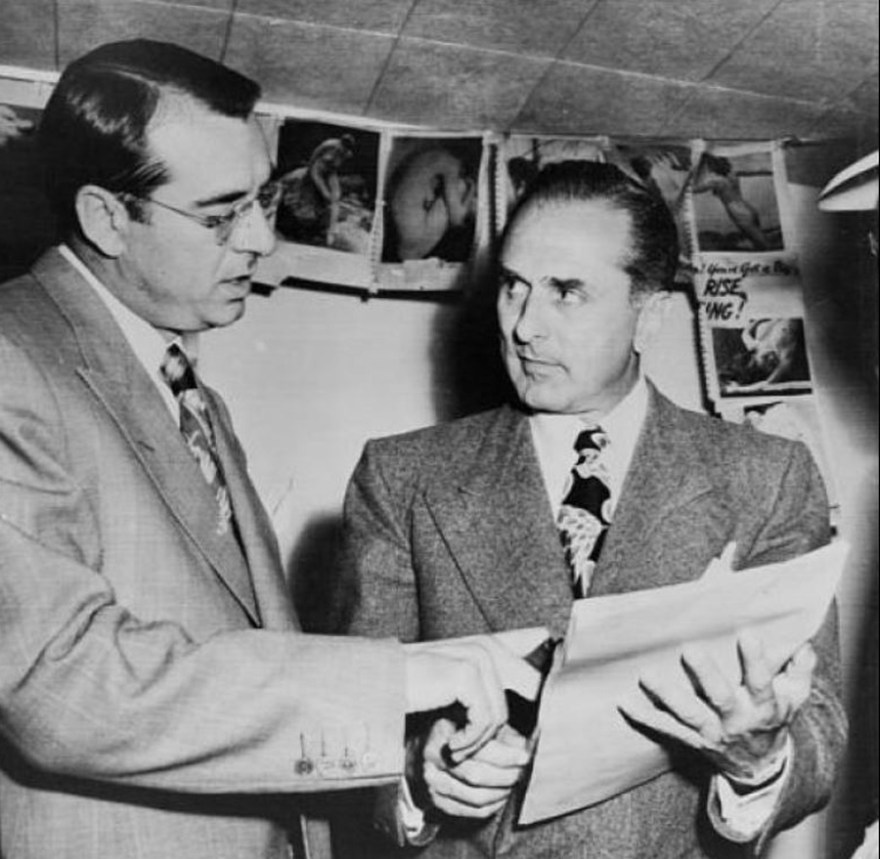
From (lr) Mobster and film producer John Rosselli and Frank DeSimone, who eventually became a LA Mafia capo in 1958.
At one point, Nixon notes in passing the parallels between gangsters coming to Los Angeles and corporate executives. He mentions how in both cases the conflict is between East Coast and West Coast interests, the big difference being that the mob is more likely to assassinate rivals. This is noted a few years after East Coast mob onsite person Benjamin “Bugsy” Siegel was punched at his girlfriend’s Beverly Hills house, and the film was released just as Frank DeSimone controlled the LA organized crime group. of John Rosselli, who left town when the family decided who would be the new leader.
Kandel and Cohen, who were also producers on the film, were likely aware of all of this when they came up with the script. As executives, they most likely followed the trades and perhaps knew some of the players from the bigger studios. They might also have heard of Roselli, who in addition to his mafia activities, was also a fellow producer, best known for his film Canon Citywho was installing his shingles at the time at Monogram Studios.
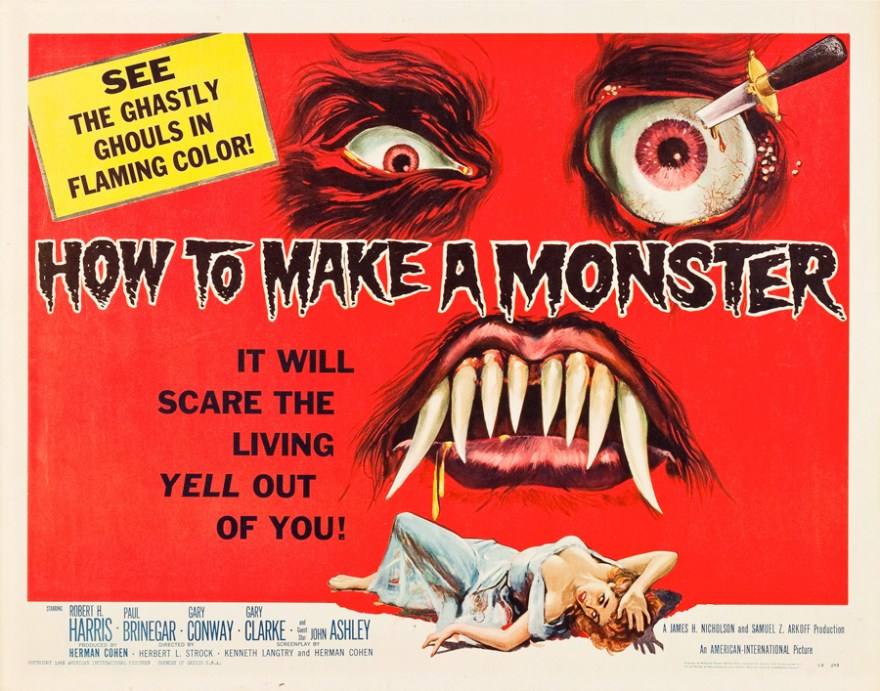
They probably decided the only way to tell all of this was to put it in a horror movie, which is often how sensitive topics are initially broached with the general public if anyone felt there was problems giving people the real story.
Mind you, a few decades later we could have had the unvarnished story of the old studios and LA gangsters having to fight the forces of the back east, but back then we could only get a fantasy with some gems of truth woven into a tale where the details don’t really click the closer you look.
Kind of like the kind of stories usually told by narcissists…




Add comment